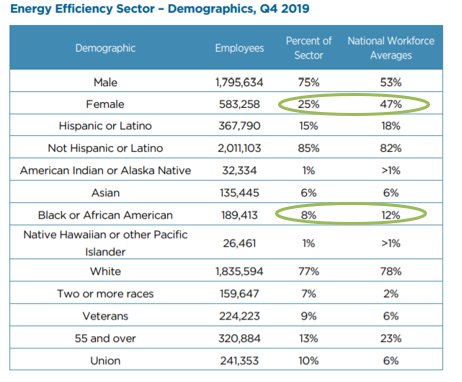Energy efficiency has long been an engine for U.S. job growth, directly supporting at least 2.4 million jobs and producing more new ones than any other part of the energy sector. While the COVID-19 pandemic has put many jobs at risk, tech-savvy workers will be needed to build or retrofit increasingly efficient homes and buildings.
Workforce training is one of the pressing topics at this year’s Summer Study for Energy Efficiency in Buildings Virtual, which begins August 17. The energy efficiency workforce, the focus of six Summer Papers research papers and an informal session, will be discussed throughout the conference. Only attendees will have exclusive access to the plenaries, interactive sessions, networking opportunities, and the more than 400 papers on the latest energy-saving technologies, policies, and programs.
Register for the 2020 Summer Study
“The construction and energy efficiency sectors consistently report difficulty finding enough skilled workers to meet their pre-COVID-19 demand,” says Sarah Truitt, a project leader at the National Renewable Energy Laboratory (NREL). “When businesses cannot find adequate labor with necessary skills, they must delay projects, increase costs, and resist technologies that require specialized knowledge and skillsets to install.”
Next month, ACEEE will release an in-depth report on training the workforce for high-performance commercial buildings. In a Summer Study paper, “Building the Efficiency Workforce,” Truitt takes a broad look at the issue with co-authors Juliana Williams of NREL and Madeline Salzman of the U.S. Department of Energy (DOE). She discusses a new DOE effort, announced in June, that includes an energy efficiency career map.
Here are excerpts of our conversation:
Which skills will professionals need for advanced, energy-efficient construction that they currently lack?
Overall, better understanding of building science principles – including heat transfer and moisture transport – is necessary for professionals to problem solve in the field, particularly in retrofits. Studies suggest more people need to understand and use Building Information Modeling to improve planning and sizing calculations. I also anticipate more cross-disciplinary training among architecture, engineering, and construction professionals as a need that will continue to grow. Finally, increased knowledge about the benefits of efficient buildings among real estate and financing professionals is key to these buildings being appropriately valued and financed.
Your paper notes demographic gaps in the efficiency workforce. Which are most prominent?
Women and Black Americans are the most underrepresented groups within the energy efficiency sector when you compare their participation to national workforce averages.
2020 U.S. Energy and Employment Report
Your paper mentions Germany’s worker training. How does it differ from the U.S. approach?
Germany has done a great job of exposing students to careers in the trades. In fact, a majority of Germany’s secondary school graduates move on to post-secondary Career and Technical Education (CTE) programs. Comparatively, CTE programs are not promoted as much in the United States, and many school systems define success in terms of students progressing to four-year degree programs rather than CTE programs. Recent efforts from the federal government to promote CTE programs have included an executive order on expanding apprenticeships in America in 2017 and reauthorization of the Carl D. Perkins Career and Technical Education Act (Perkins Act) in 2018.
Can you tell us a bit about DOE's new workforce accelerator and career map?
Yes! The DOE Buildings Technologies Office recently awarded the Interstate Renewable Energy Council with a project to create a career map that describes the range of energy efficiency occupations across industries. The online map will be interactive and will include information about necessary skills and credentials and chart potential pathways for career advancement in different occupation types.
In June, DOE announced the Better Buildings Workforce Accelerator. The accelerator will convene a group of like-minded organizations working to increase the level of building science and energy efficiency knowledge across all professions related to the building industry. This is a 3-year effort where partners share best practices and lessons learned, have access to DOE and national laboratory experts, and can connect and collaborate. We have our kick-off meeting planned for September, so there is still time to join.
Given COVID-19's impact on the energy efficiency workforce, how important are your efforts now and what do you hope to achieve in the next three years?
COVID-19 is presenting sincere challenges to America’s workforce, families, and industries. We have a big opportunity to focus on education and upskilling – while people are at home and some, unfortunately, are out of work. We hope that when provided with informational resources and access to trainings, people interested in entering the efficiency workforce can expand their skills. The Better Buildings Workforce Accelerator will include a centralized website for this information.



